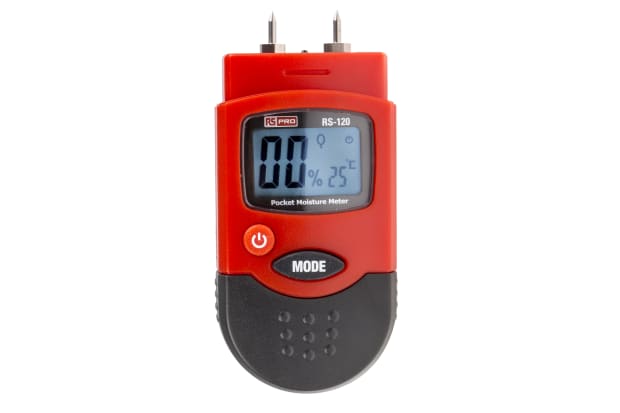Delve Into the Globe of Moisture Meters: Everything You Required to Know
In the realm of moisture meters exists a world of precision and practicality that typically goes undetected. Understanding how moisture meters operate, the various kinds available, and their diverse uses can lose light on their importance in ensuring quality and performance.
Exactly How Moisture Meters Work
Moisture meters run by measuring the electric conductivity or capacitance of products to identify the moisture content present. These meters are vital devices across various industries, including farming, woodworking, and construction. By utilizing various techniques such as pin-type or pinless technology, moisture meters supply exact readings that assist specialists make educated choices.
Pin-type dampness meters function by inserting the sharp pins right into the material being evaluated. On the other hand, pinless dampness meters utilize electromagnetic signals to check a bigger area without creating any type of damage to the product's surface area.
No matter the method utilized, dampness meters play an essential duty in protecting against problems such as mold development, architectural damages, or item problems triggered by excess moisture. Recognizing exactly how these meters job is crucial for guaranteeing the top quality and integrity of materials in different applications.
Sorts Of Moisture Meters
Provided the essential role moisture meters play in different sectors, it is important to recognize the different types offered to professionals for accurately examining dampness degrees - Moisture Meter. There are mainly 2 major kinds of moisture meters: pinless and pin-type moisture meters

On the other hand, pinless wetness meters utilize electro-magnetic sensor plates to scan a bigger area of the material without triggering any damages. This kind is ideal for promptly scanning huge locations and is generally utilized for flooring, wall surfaces, and ceilings. Pinless meters are hassle-free for taking analyses on completed surface areas without leaving any kind of visible marks.
Both sorts of moisture meters have their benefits and are chosen based on the particular needs of the job available. Understanding the distinctions between these types is crucial for experts to make accurate wetness evaluations.
Applications Across Industries
Construction experts depend on moisture meters to evaluate the dampness levels in structure materials like drywall, concrete, and wood, which is vital for preserving structural integrity and stopping concerns like rot or mold and mildew. The flooring industry makes use of wetness meters to measure the moisture material in subfloors before installing various flooring treatments, avoiding pricey problems due to excess dampness. In the food market, dampness meters are used to monitor and control moisture degrees in items such as grains, nuts, and dried out fruits to preserve quality and top quality.
Tips for Making Use Of Moisture Meters
When determining the wetness content in various materials,Utilize the wetness meter's calibration setups to make certain precise readings. Calibration is crucial for the appropriate performance of a wetness meter. Before each usage, it is suggested to inspect and adjust the calibration setups according to the particular material being evaluated. In addition, make check here certain the meter is readied to the proper dampness variety for the product you are determining to get the most precise results.
When using a pin-type dampness meter, put the pins to the appropriate depth recommended for the product being evaluated. This makes certain that the moisture analyses are extracted from the correct depth within the material, providing a more accurate depiction of its wetness content. For pinless moisture meters, remember to keep appropriate contact with the product's surface area to get dependable readings.
Consistently check and change the batteries in your moisture meter to protect against incorrect analyses because of low power. When not in use to prolong its life expectancy and browse around this site preserve its precision, Store the meter in a dry and secure place. By complying with these pointers, you can take full advantage of the efficiency of your moisture meter and obtain specific wetness material measurements throughout various products.
Upkeep and Calibration
To guarantee the precision of moisture web content dimensions, routine upkeep and calibration of the dampness meter are vital action in its correct functioning. Maintenance involves keeping the wetness meter tidy and complimentary from debris that can influence its readings. It is very important to adhere to the manufacturer's standards for cleaning to protect against damages to the gadget. Additionally, regular calibration is essential to validate the accuracy of the analyses. Calibration changes the dampness meter to guarantee that it gives constant and trustworthy outcomes.
Calibration ought to be executed occasionally, specifically if the wetness meter is made use of frequently or in vital applications where precise dimensions are needed. By maintaining and adjusting the dampness meter frequently, users can trust the precision of the wetness content dimensions acquired.
Final Thought

Finally, dampness meters play a crucial duty in different markets by accurately determining the moisture material of products. Comprehending just how these gadgets function, the various types readily available, and correct maintenance and calibration are vital for acquiring reputable outcomes. Whether in production, building and construction, or agriculture, using dampness meters helps ensure quality assurance and performance in procedures.

In verdict, moisture meters play a critical role in numerous markets by precisely determining the dampness material of products.